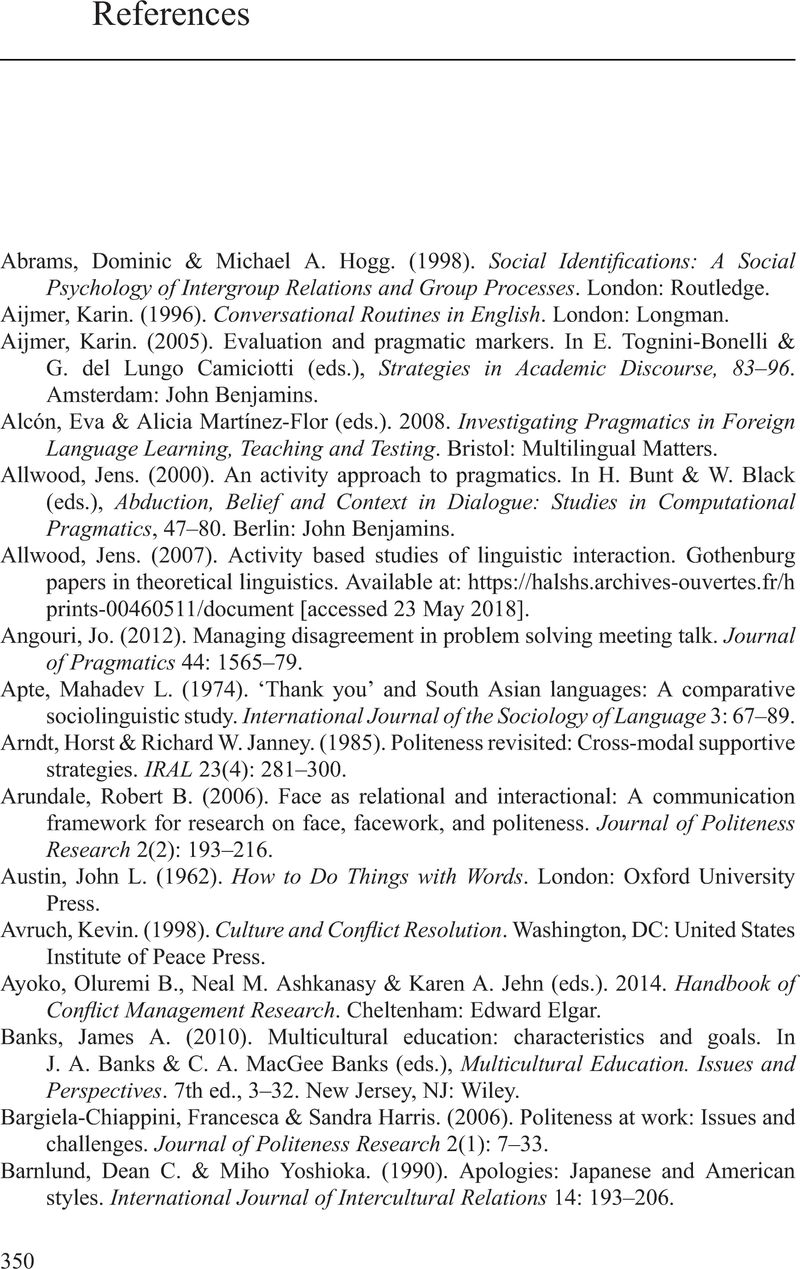Book contents
- Intercultural Politeness
- Intercultural Politeness
- Copyright page
- Contents
- Figures
- Tables
- Transcription Conventions
- Acknowledgements
- 1 Introduction
- I Conceptual Foundations
- II Evaluating Politeness across Cultures
- III Managing Politeness across Cultures
- IV Implications and Concluding Comments
- Glossary
- References
- Index
- References
References
Published online by Cambridge University Press: 22 December 2020
- Intercultural Politeness
- Intercultural Politeness
- Copyright page
- Contents
- Figures
- Tables
- Transcription Conventions
- Acknowledgements
- 1 Introduction
- I Conceptual Foundations
- II Evaluating Politeness across Cultures
- III Managing Politeness across Cultures
- IV Implications and Concluding Comments
- Glossary
- References
- Index
- References
Summary

- Type
- Chapter
- Information
- Intercultural PolitenessManaging Relations across Cultures, pp. 350 - 376Publisher: Cambridge University PressPrint publication year: 2021



